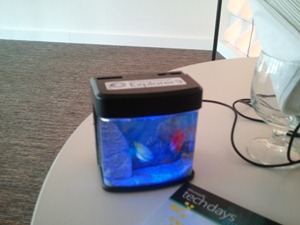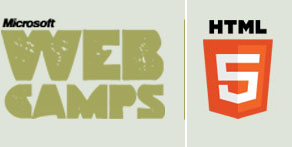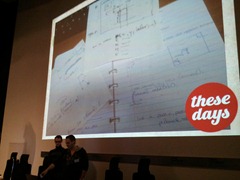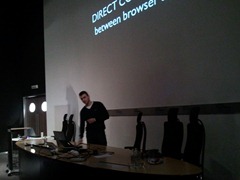HTML5 Web Camp Belgium recordings and slides available
Last week on April 6 we organized the first HTML5 Web Camp in Belgium. With registrations running out in less than 24 hours quite some of you will be happy everything is recorded and now available for online viewing or download. We were delighted to have your peers from agencies and partners presenting on real world cases. We would like to extend a big thank you to all our speakers from Netlog, These Days, Ferranti and LBi Belgium.
The session recordings are a great opportunity to learn about IE9, HTML5, Canvas, Geolocation API, JavaScript, jQuery, CSS3 and WebSockets.
Side note: In the meantime, we have just finished MIX11 event where Internet Explorer 10 Platform Preview was announced. This is the first developer preview of IE10 where we expect feedback from the community on new standards implementations. In a few words, IE10 includes support for CSS Grid alignment, CSS Flexbox, CSS gradients and CSS multi-columns.
Download and try the standalone IE10 Platform preview 1 and check out the developer guide.
Sessions and resources from the HTML5 Web Camp:
.jpg) |
Welcome and introduction In this welcome introduction I talked about Internet Explorer 9 launch, Belgian partners and how to enable site pinning with the jQuery.ie9ify plugin. We also recommend you check out {dev:unplugged} competition running until May 8th: https://www.beautyoftheweb.com/dev/unplugged Take a look at the contest submissions so far: https://contest.beautyoftheweb.com/ Related resources: |
.jpg) |
Location-aware shouting Speaker: Frank Desmettre, Netlog HTML5 offers several solutions for augmenting the experience of users on the web. One of these solutions is providing an accurate location of a user. Most of today's smartphones already support the technique of requesting your location through GPS but now an HTLM5 compatible browser can also pinpoint your location based on the IP of your device and nearby wireless access points. At Netlog we've been using the Geolocation API to add location information to user messages (shouts) both on the web version and the mobile site. This location is used to place them on a map that can be easily navigated using HTML5. This way we enable users to find out what's going on around them or on a location of their choice. Related resources:
|
.jpg) |
How Object-Oriented JavaScript can help your HTML5 site Speakers: Pieter Helsen and Bram Verdyck, These Days We all know that we now have a new Canvas element and some other very cool HTML5 tags, but how do you get to implementing these correctly? The www.frameratefest.nl site for example, is a mere 200 lines of HTML. How is this possible? Say Hello to OO JavaScript. By using the Frameratefest site These Days will explain how this concept has helped develop the site. We'll dive into code! Related resources: |
.jpg) |
WebSockts on Fire Speaker: Jef Claes, Ferranti While the WebSockets API specification is not stable yet, various browser vendors have already implemented a prototype in their latest browser versions. Microsoft released their WebSockets prototype in December 2010. While there is no native implementation of WebSockets in IE9 just yet, for now they are providing a solution which works cross-browser, relying on a Silverlight client. Server-side a Windows Communication Foundation server is made available, which implements the latest version of the WebSockets protocol. In this session, Jef covers the WebSockets fundamentals, demonstrate a proof of concept that could be used in various fire department web applications and deep-dive into the code of this proof of concept. Related resources: |
.jpg) |
Creating cross-browser designs with CSS3 and jQuery in a SCRUM methodology Speaker: Tim Vermaelen, LBi As today's web applications are growing in complexity, making them cross-browser is still key to success. Since history of web design we've seen all kinds of techniques that tackle browser issues. Still, they are very time consuming and expensive. This presentation will give you a quick look on what's possible these days with CSS3 and jQuery and how you can save time creating cross-browser web applications. Throw away half of your HTML code, half of your background images and start using more flexible techniques. This session is going to be based on a case of a big Belgian company, to be shown during the session. |
A few pics of the event to finish off.

The much coveted IE9 USB-powered fish tank.


